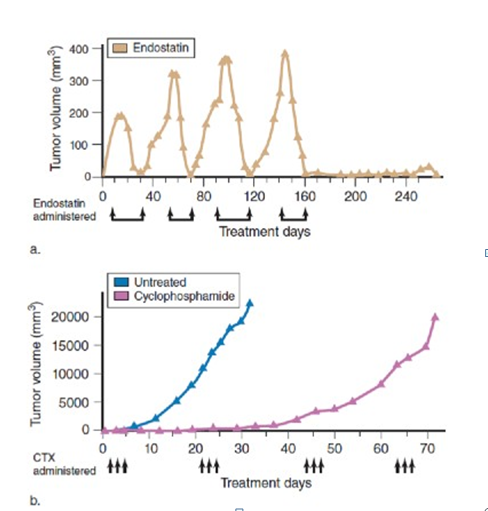The movement of oxygen through the aquatic plant may depend on
A. osmotic absorption by the roots.
B. aquaporins.
C. negative pressures created by transpiration.
D. differences in the water potential of different tissues.
E. aerenchyma tissue.
E. aerenchyma tissue.
Aerenchyma is a tissue that has evolved in freshwater plants to facilitate the transport of oxygen from the above-water portion of the plant to the parts that are below the water. Aerenchyma is a loose parenchymal tissue with large air spaces.
You might also like to view...
Patients with SCID have severely reduced T cell populations but relatively normal B cell populations.
Answer the following statement true (T) or false (F)
What did the researchers conclude based on the data in figure (a)?

A. Endostatin shrunk tumors without development of resistance.
B. Endostatin shrunk tumors but resistance developed.
C. Cyclophosphamide delayed the growth of tumors without development of resistance.
D. Cyclophosphamide delayed the growth of tumors but resistance developed.
E. Tumors in untreated cells shrank in size.
Why are organisms with an odd number of chromosome sets usually sterile?
A) Almost all gametes will have an unbalanced set of chromosomes. B) Chromosomes will fail to segregate independently during meiosis I. C) Chromosomes will fail to segregate independently during meiosis II. D) Because an odd number of chromosomal sets is present, meiosis will not occur at all.
Experiments have demonstrated that the "words" of the genetic code (the units that specify amino acids) are
A) single nucleotides. B) two-nucleotide sequences. C) three-nucleotide sequences. D) nucleotide sequences of various lengths.